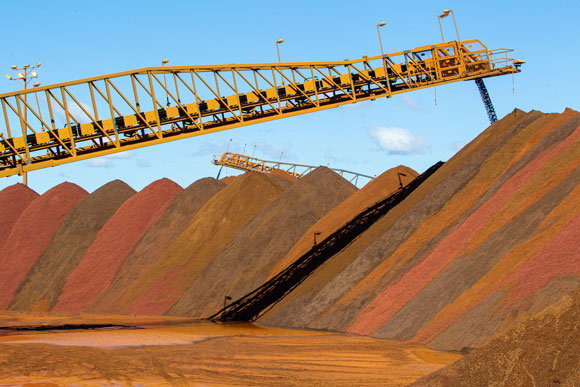Iron ore price reaches 10-year high but retraces after Five-Year Plan details
Seaborne iron ore prices hit a 10-year high this month at $178 per ton before profit taking. Investors bet on strong steel demand and robust consumption in top consumer China.
Don’t miss the MetalMiner analyst team on March 24 at 10 a.m. CDT for a 30-minute metals market forecast and strategies to deploy in falling markets: https://zoom.us/webinar/register/WN_6J8wAyYySfihVk3ZUH9yMA.
Iron ore price and pollution in China
But following the release of details in China’s new Five-Year Plan calling for wide-ranging and ambitious targets to reduce environmental pollution, iron ore prices experienced a sharp sell-off. Investors took profits at the prospect that steel production could be restricted by Beijing in an effort to reduce pollution.
Steelmaking is a major source of pollution in China. The steelmaking process is estimated to account for about 15% of the country’s total emissions.
So it is hardly surprising investors took profits at the prospect of the steel industry potentially facing significant environmental controls and increased efforts by Beijing to close excess steel production.
EAF acceleration
What the Five-Year Plan may well accelerate is adoption of electric arc furnace (EAF) steelmaking as blast furnace operators switch to scrap consumption to reduce pollution.
EAFs are a significantly less polluting production method than traditional blast furnaces. However, that is only the case if the electric energy source is not totally from coal. Unfortunately, much of China’s still is.
Still, if pollution is measured at the point of production rather than mine to finished product, EAF will be a winner.
Beijing has already reclassified and eased steel scrap imports late last year, possibly with an eye on encouraging adoption of such less-polluting technologies.
Higher-purity iron ore
There will likely also be greater use of high-purity iron ore and pellets, with Fe purity percentages in the mid- and upper-60s. Both offer a route for blast furnace operators to reduce their pollution levels. For more modern, efficient mills they can mitigate penalties or meet threshold targets.
The premium for high-grade iron ore is already a record above low-purity material. This is in part because supply sources are limited. Those with the highest purity resources are charging a premium. One reason why imported iron ore volumes are so high — domestic production is generally of low Fe purity material, which consumers have shunned more and more.
Peak iron ore price?
For the time being, mills are making good money and can afford the cost.
However, if steel demand were to drop this year, iron ore prices could see further falls.
As such, have we reached peak iron ore?
The short answer? Maybe. Much will depend on how enthusiastically (and how quickly) Beijing and state governments apply the edicts of the new Five-Year Plan. In addition, it will depend on how quickly last year’s stimulus measures begin to lose their impact on the economy.
China’s bounce-back has been impressive. Beijing, however, is doing a lot behind the scenes to slow the growth of debt and give the property market a gentle landing.
For the first time in decades, the US could have a higher rate of growth this year than China.
But the US is not a market for seaborne iron ore, so China remains the principal driver of price direction.
The MetalMiner Best Practice Library offers a wealth of knowledge and tips to help buyers stay on top of metals markets and buying strategies.



Leave a Reply